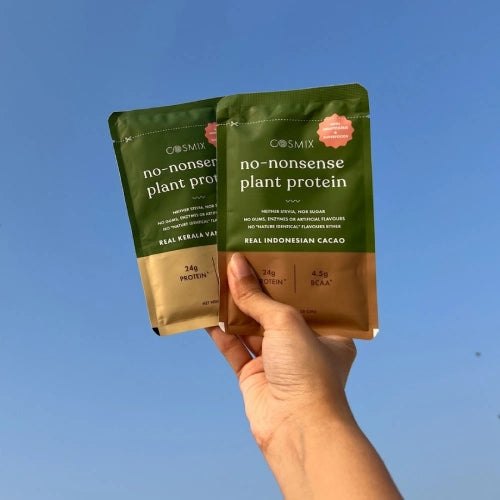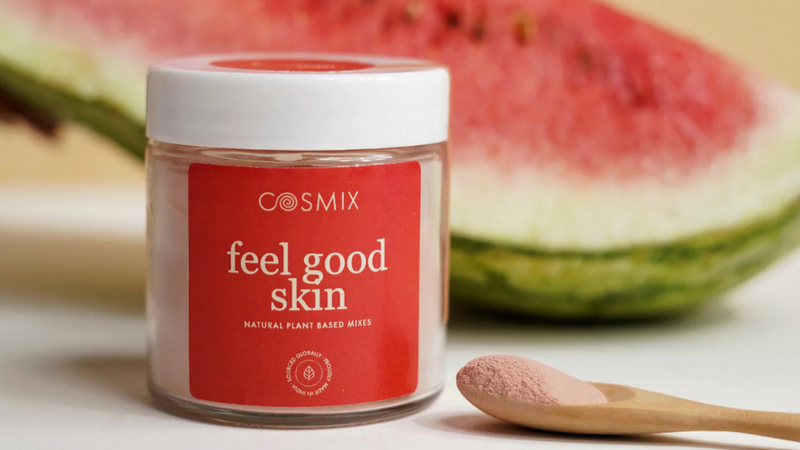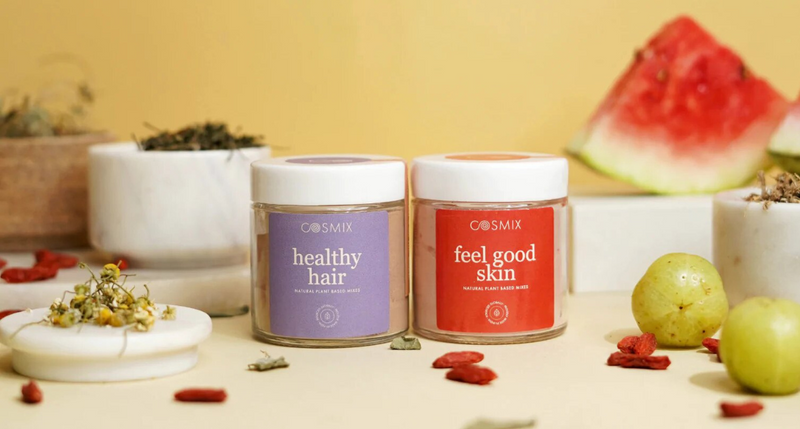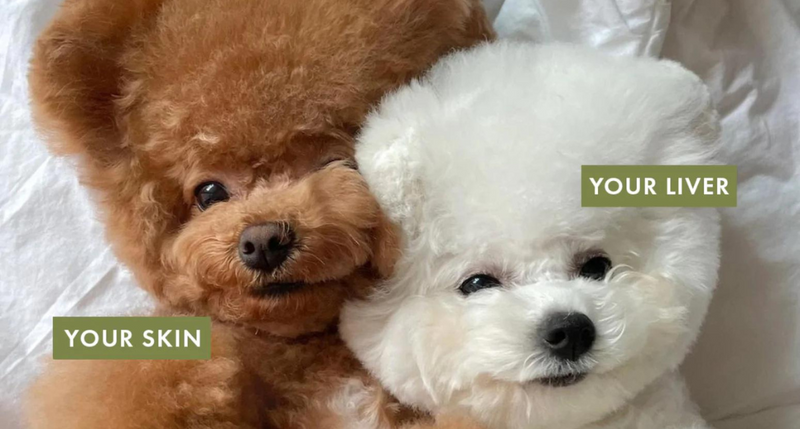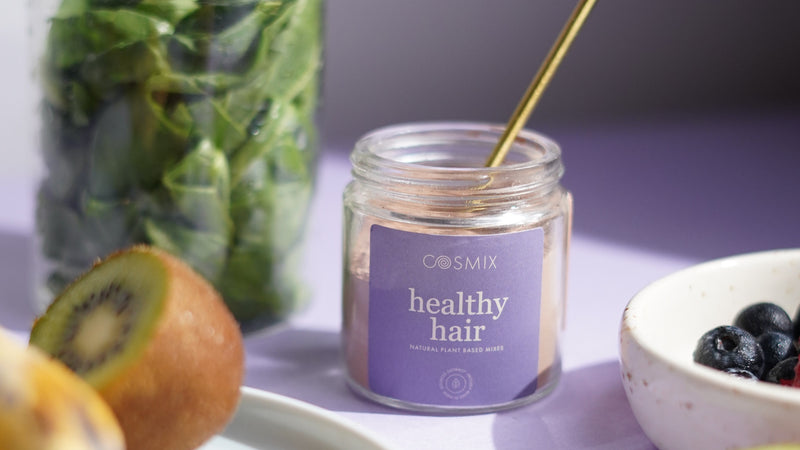Acne has always been associated with puberty. Afterall, it’s a rite of passage for most––even the lucky few who manage to escape the wrath of it, also find themselves battling it every now and again. But that’s the thing, acne isn’t just limited to your teen years. Bad news guys, it can spill into adulthood as well. If you’ve ever woken up with bad PMS cramps and a very angry pimple on your jawline, forehead or cheek (or all put together) to go with it––that not-so-little red visitor is known as ‘hormonal acne’. Before you go hitting the panic button and reliving your puberty years, it’s important to understand what triggers hormonal acne and how it differs from the regular little red monsters that crop up on your face and body.
What is hormonal acne?
Hormonal acne often occurs in your adulthood––between the ages of 20 to 50––and can be described as bumps that span across your face, body, back, and neck. These bumps come in the form of pimples, whiteheads, blackheads, and even cysts. Hormonal acne actually stems from an important slip in your system––excessive oil production in the sebaceous glands––and this is triggered by a fluctuation of hormones. So even if you’ve never had acne during your teen years, hormonal acne can get to you later on––men and women included.
How to tell you’ve got hormonal acne?
Let’s start with the basics. As the name suggests, hormonal acne has everything to do with your hormones. This type of acne presents itself in the form of painful red pustules or cysts that are red and inflamed. These ones are scary as they have the ability to leave scars! The mildest type of hormonal acne often occurs around your period––this’ll be a breakout or two that is indicative of the hormonal changes your body experiences during menstruation. The most extreme form of hormonal acne occurs when the breakouts continue, independent of your period.
Hormonal acne usually occurs around the jawline, lower cheeks, and chin, as well as between your brows. On your body it shows up in areas such as your neck, chest, back, and shoulders. Remember, this type of acne can be painful AF!
What are the causes of hormonal acne?
First things first, acne occurs when your pores get clogged. The excess oil in your skin attracts dead skin cells, dirt, and grime into your pores. The moment these elements get trapped, your pores get clogged, resulting in inflammation. This comes in the form of whiteheads, blackheads, and even cysts. Now here’s where your hormones step in. According to research, sebaceous glands are very closely connected to testosterone (the male sex hormone present in both males and females. When your body tends to produce excess testosterone (which is usually just before your period), it also triggers your sebaceous glands to produce excess oil.
Other hormonal changes such as PCOS, pregnancy, or anything that can cause an hormonal imbalance in your body often shows up as acne on the face too!
How can you treat hormonal acne?
Hormonal acne treatment is an amalgamation of several factors. Considering you are dealing with a hormonal rollercoaster ride, it’s important to dive into internal treatments, as well as external care. Since this specific type of acne can be quite detrimental to your skin, it’s important to also consult with a dermatologist, who pinpoint the exact cause of your breakouts and treat it accordingly. Other than that, here are a few home
#1 - Reconsider Your Diet
Your hormones are closely related to literally everything in your body, including your diet. A small fluctuation can have a major domino effect on your skin too. That’s why it’s imperative for you to watch what you eat. A lot of foods can trigger your sebaceous glands and how! Here’s a list of what to avoid.
Eating a diet with a good balance of carbs, protein, fibre and good fats in every meal is important to curb the blood sugar roller coaster, especially if you have PCOS. Here’s a list of the kind of hormonal acne diet you need to follow, to balance things out:
1. Veggies: Broccoli, kale, spinach, bell peppers, cauliflower, carrots, zucchini
2. Fruit: Berries, oranges, bananas, grapes, apples
3. Healthy fats: Eggs, olive oil, salmon, avocados, nuts
4. Anti-inflammatory herbs and roots: Ginger, turmeric, cinnamon, parsley, garlic, black pepper
5. Whole grains and legumes: Chickpeas, dal, kidney beans, brown rice, quinoa
6. Starchy veggies: Sweet potato, farro root
Pair your diet with natural supplements that help balance out your hormones, as well as treat your skin from the inside out.
#2 - Salt
Sodium causes dehydration, and dehydration results in overproduction of oil.
2. Sugar & starchy foods: Foods high in sugar increase production of IGF-1, a growth hormone that triggers an overproduction of oil. Sugar and high starch foods increase blood sugar levels. Individuals with PCOS who suffer from insulin resistance are not able to regulate these blood sugars efficiently, causing a stimulation of androgen production and hormonal acne.
#3 - Dairy
Did you know dairy produces its own hormone, oestrogen, which basically tips your natural hormones off scale.
#4 - Refined Carbs
White pasta, spaghetti, rice, bread, can all increase production of the IGF-1 hormone. Yes, the same one in sugar. The result? Excess oil you didn’t ask for in the first place.
#5 - Alcohol
This one is quite obvious. Alcohol is a natural diuretic, which means it can really dehydrate your skin. Dry and dehydrated skin pushes the sebaceous glands to overwork, resulting in excess oil production and acne.
#6 - Work On Your Stress Levels
Did you know that stress can trigger an excess production of the hormone cortisol in your body? This release then triggers an increase in oil production in your skin glands resulting in hormonal acne. That’s why it’s important to keep the stress at bay, especially if you're prone to breaking out all thanks to your hormones. Keep calm, stay hydrated, and reduce stress! Make sure you sleep on time and get adequate amounts of quality sleep. Try and involve yourself in ‘me-time’ activities such as yoga or meditation or even moderate exercise. This will not only keep stress levels at bay, but will also prevent your hormones from going haywire and impacting your skin.
#7 - Follow A Good Skincare Routine
A good skincare routine is a must! Cleansing and moisturizing is definitely a must, however, those dealing with hormonal acne also need to exfoliate. Remember, acne is caused when your pores attract dirt, grime, and dead skin cells––therefore you need to really cleanse your pores out, in order to prevent breakouts. Use a chemical exfoliator that contains salicylic acid –– this will help cleanse your pores, while reducing inflammation. Look for non-comedogenic skincare products that contain ingredients that won’t clog your pores. Consistency is key, so keep that skincare routine going.
When to visit a doctor?
Hormonal acne is an inside issue that is visible on the outside, that is why you have to consult your doctor to understand why your skin is behaving the way it is. You might need prescription treatment (both topical, as well as ingestible), in order to bring your hormones back on track. Professional help is recommended if acne persists and is too painful to bear.
Acne can be quite traumatic to deal with, especially when it spills into your adult years. With hormonal acne, especially, not dealing with it correctly can lead to a vicious cycle that can even impact your mental health. Think of it this way: hormonal acne causes stress, stress leads to change in hormones, which in turn leads to more acne. Yeah, it is a cycle. The right care and treatment, both internal and external, can help you deal with it properly! And remember, popping your pimples is never an option.